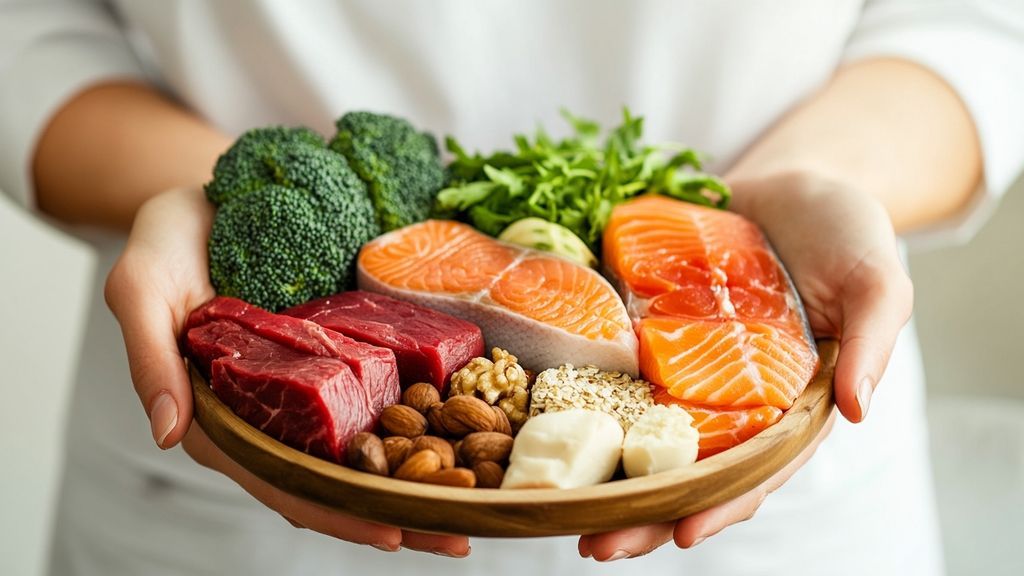Understanding the importance of protein in your diet is vital for anyone involved in fitness, especially those who practice CrossFit. This high-intensity workout requires not just willpower and determination but also a strategic approach to nutrition. Protein acts as the building block for your muscles, aiding in repair and growth after strenuous workouts. But how much protein does one really need to optimize their performance in CrossFit? This piece explores the intricate connection between protein intake and your CrossFit goals, providing insights and expert-backed guidelines.
With a myriad of protein sources available, from lean meats and legumes to supplements, it can be challenging to determine the right amount tailored for your body. Different factors such as age, sex, weight, activity level, and specific fitness goals play a vital role in calculating your optimal protein needs. By exploring these elements, alongside expert-derived calculations, athletes can ensure they are fueling their body correctly for peak performance. Let’s dive deeper into understanding protein requirements and strategies tailored for successful CrossFit training.
Understanding Protein: The Basics
Protein is one of the essential macronutrients that our body needs. Comprised of amino acids, it plays a pivotal role in numerous bodily functions, including muscle repair, hormone regulation, and immune function. A frequent question for CrossFit enthusiasts is the exact quantity of protein necessary to bolster their training. Generally, an active individual requires more protein compared to sedentary counterparts, especially when engaging in challenging workouts.
The National Academy of Medicine recommends that around 10-35% of your total daily calories should come from protein. For those keen on muscle gain or preserving lean mass while cutting fat, the intake can be much higher, anywhere between 1.2 to 2.2 grams of protein per kilogram of body weight. Therefore, knowing your body weight in kilograms helps in making more tailored dietary choices.
How Protein Supports Muscle Recovery and Growth
After an intense CrossFit session, muscles undergo micro-tears. The body initiates recovery through a process known as muscle protein synthesis (MPS). This process requires adequate protein intake, which serves as the necessary fuel for muscle repair and growth. Post-workout nutrition is thus crucial; a combination of carbohydrates and proteins can assist in quicker recovery, preparing the body for the next workout.
Taking in protein after a workout provides the amino acids essential for repairing and rebuilding muscle. Studies suggest that a range of 20-30 grams of high-quality protein immediately post-exercise can optimally stimulate MPS. This corresponds to the typical amount found in a protein shake or a meal containing lean meat, fish, or dairy. Consistency is key; maintaining a regular schedule of protein intake throughout the day maximizes recovery outcomes.
Calculating Your Protein Needs

Navigating through nutritional information can be daunting. However, using a protein intake calculator allows athletes to personalize their nutrition. This tool takes into account variables such as age, weight, height, gender, and activity level to deduce how much protein your body needs to meet its goals.
For instance, if you are aiming to build muscle, your protein requirements will be higher compared to maintaining your current weight. Based on expert recommendations, a general guideline for active adults is to consume:
- 0.54 to 0.77 grams of protein per pound of body weight for general activity
- 1.0 to 1.4 grams for strength athletes or those involved in high-intensity training
Since protein intake should align with your overall dietary strategy, consider it as part of your caloric intake, which should ideally be balanced across other macronutrients as well.
Sources of High-Quality Protein
Ensuring sufficient protein intake can easily be achieved by incorporating various high-quality protein sources into your diet. While meat is a common source, many other alternatives provide ample protein suitable for different dietary preferences.
For instance, lean meats like chicken breast and turkey offer significant protein without excess fat. Fish, including salmon and tuna, not only provide protein but are also rich in omega-3 fatty acids which are great for joint health. Vegetarians can resort to lentils, chickpeas, and quinoa, which are excellent protein sources that also bring a wealth of fiber and essential vitamins.
Moreover, protein powders (such as whey or plant-based proteins) can be used to supplement your intake, especially post-workout. These powdered supplements are convenient and can easily fit into a busy lifestyle while ensuring that your protein needs are met. However, it is essential to choose high-quality powders from reputable brands to avoid potential fillers or additives.
The Role of Protein in Weight Management
For those pursuing weight loss, protein intake is crucial not just for muscle retention but also for satiety. A high-protein diet can help you feel fuller for longer periods, reducing the temptation to snack mindlessly. By integrating more protein into meals, you can stabilize blood sugar levels and mitigate cravings—key elements in controlling calorie intake.
Research indicates that individuals following a high-protein diet while in a caloric deficit can effectively preserve lean body mass. Protein-rich meals encourage the body to use fat as its primary energy source rather than breaking down muscle tissue. The incorporation of protein not only supports maintaining your hard-earned muscles but can significantly enhance metabolic activity.
Importance of Meal Timing and Frequency
When it comes to maximizing your protein intake, meal timing and frequency play a pivotal role. Spreading your protein consumption throughout the day—integrating it into every meal—ensures a steady supply of amino acids to your muscles for growth and repair. Instead of consuming a single large protein serving, aim for smaller, consistent portions across meals.
For instance, focusing on a balanced breakfast with eggs, including protein in lunch as chicken or legumes, and topping off with a protein-rich dinner can yield better results than having all your protein in one sitting. This method supports consistent muscle repair and energy distribution while optimizing the benefits of your protein intake. Furthermore, consuming a protein-rich snack post-workout helps synergize the recovery process, giving your body the necessary fuel for muscle restoration.
Professional Guidance and Recommendations

Expert advice on protein intake can greatly assist in tailoring your nutritional strategy. Professionals like registered dietitians and certified nutrition coaches can guide you in identifying personal goals, optimal protein sources, and meal plans that cater to your unique lifestyle and needs. They can also assist in adjusting your intake as you progress through different phases of training.
A personalized plan from a professional may include regular assessments to monitor your progress. Adjustments can be made to improve your strategy, whether to align with new fitness objectives or to adapt to changing body composition. It’s essential to remain flexible and informed throughout your nutritional journey, particularly when it comes to macronutrient management.
Staying Informed: Continuous Learning
Nutrition is an evolving field. It’s vital to keep yourself updated with the current research and insights regarding protein intake in relation to fitness. Numerous resources such as nutrition blogs, podcasts, or fitness influencers can provide useful tips and alternatives for maximizing your protein intake. Regularly engaging with these platforms can enlighten your understanding of what works best for your body and keep you motivated on your fitness journey.
Additionally, participating in community events or forums often fosters learning opportunities, helping athletes share experiences and insights about effective nutrition strategies. Ensuring you are well-informed about protein and its significance in a CrossFit routine will only bolster your training efforts and help you achieve your desired results.
